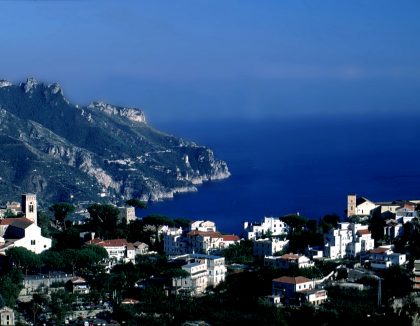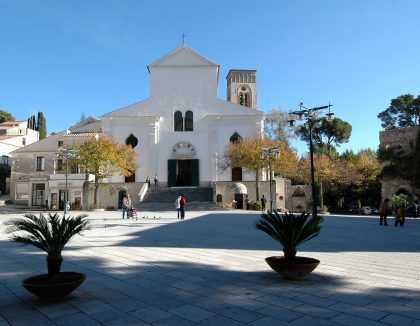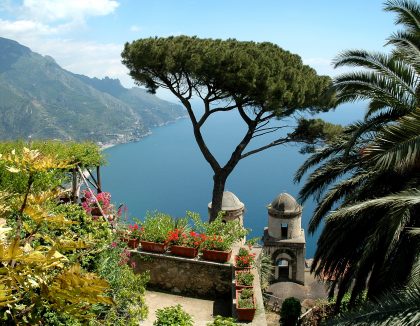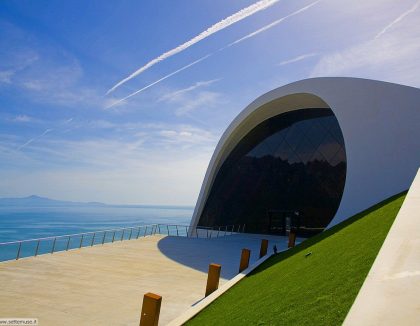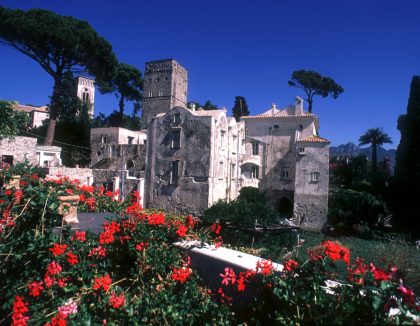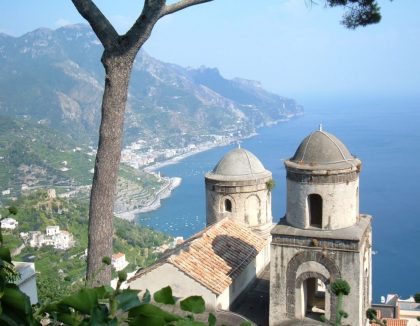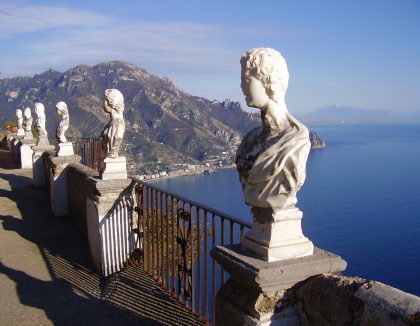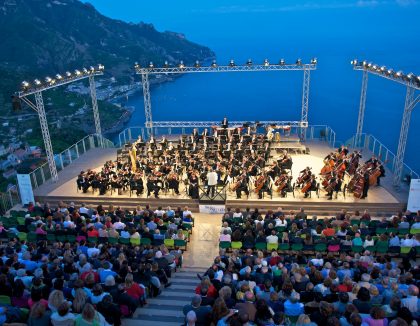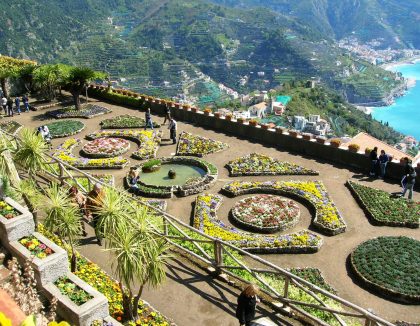Ravello
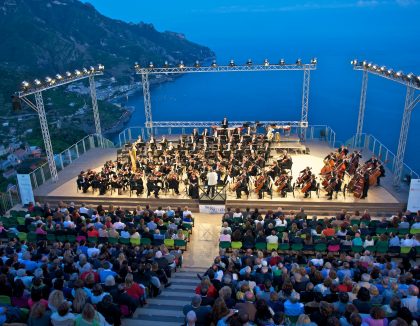
Ravello is a city that demonstrates the understatement typical of the great aristocrats or the many important artistic celebrities who, while seeking creative sanctuary, have lived here over the years.
In fact, it is impossible not to immediately notice the difference and the artistic and cultural inclination that permeates the town and clearly distinguishes it from the number of equally mythical places that abound in the area.
The refined simplicity, the silence, the discretion and it's historic centre, free of car traffic, give it an unheard of charm for the Amalfi coast and a flavour and aspect that is clearly chic.
Suspended between the sky and the sea, Ravello occupies a geografic and natural position that enables it to dominate the entire Gulf of Sorrento from above and to literally look at the entire coast from top to bottom. The city was already known at the time of the ancient Roman settlements and was historically discovered andnpractically restylized by the international travellers during the period of the 'Grand Tours'. Just lean out from the terrace of Villa Rufolo or Villa Cimbrone, with their spectacular gardens and home to great symphonic concerts, to understand the effect that this apparently inaccessible and modest farming community must have had on the imaginations of the great artists who have visited it.
There are an innumerable number of works that have been dedicated to or inspired by the atmosphere of Ravello.
Since the time of Boccaccio,who set one of the tales of The Decamerone here, Ravello was andcontinues to be the adoptive homeland of artists, painters, directors,writers,and musicians.
Here Wagner wrote the 2nd act of Parsifal, drawing inspiration from Ravello for the fabulous gardens of Klingsor. D. H. Lawrence conceived splendid pages of 'Lady Chatterley's Lover ' here, and Gore Vidal wrote and lived in the splendid villa which he owned up until a few years ago.
Escher lived in Ravello for several years, giving intimation and contribution to the development of the decorative ceramic art of nearby Vietri.
Greta Garbo and Leopold Stokowski, Roberto Rosselini and Ingrid Bergman, divas and aristocrats seeking inaccessible and hidden love nests, lived periods of private intimacy here.
It isn't surprising, therefore, that cultural events of the highest level, such as, the Ravello Festival take place here or that the city has become elective custodian of the most cultivated traditions of symphony music.
Ravello, City of Music is not, in fact, just a slogan and whoever loves classical music cannot avoid listening to it here as in no other place in the world .
Ravello adds the beauty of nature and it's natural, open-air auditorium to the classical music, immerging the audience in the magnificence of nature, emphasizing the harmony of classical music and the universal significance that it holds for the human spirit.
It is impossible, moreover, not to let yourself be seduced by the high quality of life that the city retains and shares with even the most ordinary tourist.
Contrary to the haughtiness of a museum, Ravello is an open air art gallery with natural stages, refined shops that are rich in engravings and art prints, corals and hand-carved cameos, gold work, photography books, ceramics of the highest quality, exhibits and rare music engravings.
Open-air concert halls, stores and shop-windows that can't possibly take away from the monumental charm of this city with it's splendid cathedral that is worth a visit if only to admire the splendid mosaic of 'Jonah and the Whale' that adorns one the two very old pulpits conserved here.
Getting back down to earth, Ravello is full of wonderful restaurants and is home to vineyards that are well-known all over the world.

